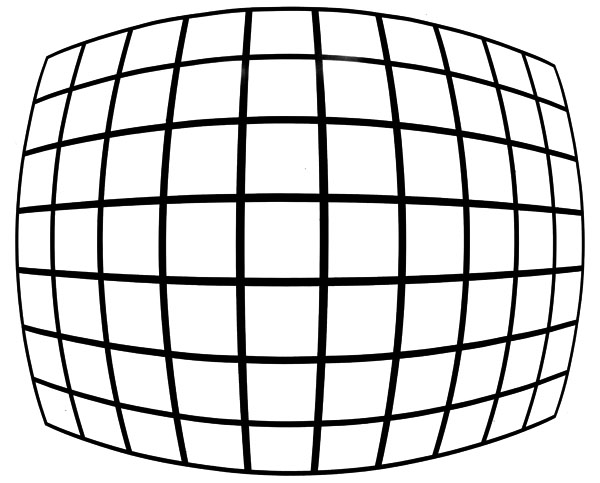|
Samyang 8mm f/3.5 Fisheye (Canon EOS) - Review / Test Report - Analysis |
|
Lens Reviews -
Canon EOS (APS-C)
|
|
Page 2 of 3

Distortion
The Samyang is a fisheye lens and as such the extreme amount of barrel distortion is actually a feature and not a bug. However, the Samyang is still a fairly unusual fisheye - it has a near-"stereographic" projection so its distortion characteristic is actually less extreme at the image borders compared to conventional fisheye lenses. It's the first of its kind and Samyang even filed a patent for the design.

Note: Some of you may notice that our test chart wasn't perfectly aligned here. Sorry for that but you should get the message anyway.
Vignetting
It's basically impossible to provide really valid vignetting data for a fisheye lens. We tried to do some "creative" lab testing here and we'd estimate the vignetting to be around 1EV at f/3.5 and about 0.7EV from f/5.6 onwards. This may appear to be a bit on the high side but in the real life this is really a meaningless amount because the fisheye effect will overshadow any amount of vignetting to viewers anyway. We've seen also some slight color shifts towards the image borders but the effect isn't overly pronounced and, again, normal for fisheye lenses (used on image sensors).
MTF (resolution)
Testing a fisheye lens is a bit of an adventure rather than factory-style measurements. It's fairly easy to get meaningful values at the image center but the borders are already far, far, FAR out there so we had to use a quite non-standard setup here and it was really impossible to measure the extreme corners in a meaningful approach.
Anyway, the center resolution is already excellent straight from f/3.5 whereas the borders are quite soft. However, the borders receive quite a boost at f/5.6 reaching very good figures here. Based on our field image we'd say that the extreme corners see a further improvement at f/8 though. f/11 is still perfectly usable but diffraction effects start to reduce the effect resolution here already.
Please note that the MTF results are not directly comparable across the different systems!
Below is a simplified summary of the formal findings. The chart shows line widths per picture height (LW/PH) which can be taken as a measure for sharpness.
If you want to know more about the MTF50 figures you may check out the corresponding Imatest Explanations
Chromatic Aberrations (CAs)
Fisheye lenses are extreme lenses by definition and their edge projection characteristic isn't exactly easy task for today's image sensors. Consequently there's quite an amount of lateral CAs (color shadows at the image borders) of around 2px (width) at the image borders and some more in the extreme corners. This may sound worrisome but this is in line with other fisheye lenses that we've tested so far.
However, even such an amount of lateral CAs can be corrected during post-processing (e.g. in Photoshop).

Purple Fringing
Purple fringing is a blooming effect at extreme contrast transitions which spreads across a fairly large amount of pixels. It is a quite typical problem for fisheye lenses and yes, the Samyang has its share here. However, the effect isn't as pronounced as e.g. in the Tokina 10-17mm f/3.5-4.5 Fisheye zoom lens. Unlike lateral CAs it is difficult to correct but you can ease the problem with some efforts.

Flare
Ultra wide angle lenses tend to have some problems in backlighting conditions. If pushed to the max the Samyang will also show you a few ghosting effects but the overall contrast remains very high. The scene below is quite a stress test for instance and the Samyang struggles far less here than you might expect. In fact it's quite impressive for such a lens.

|